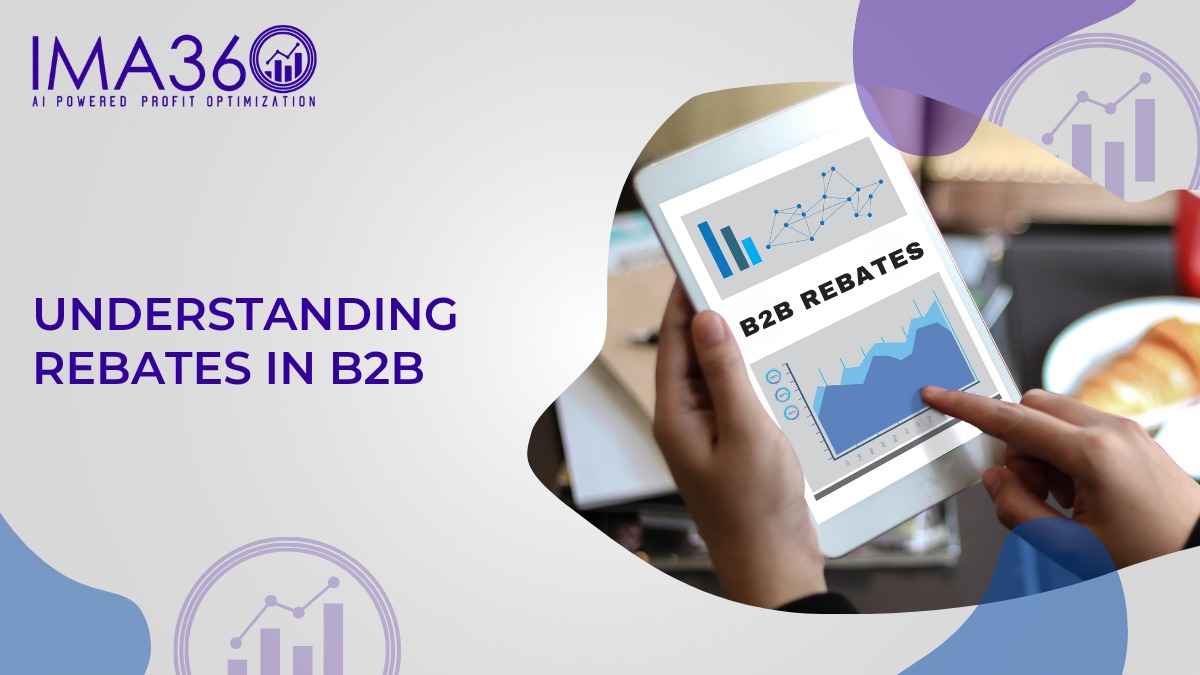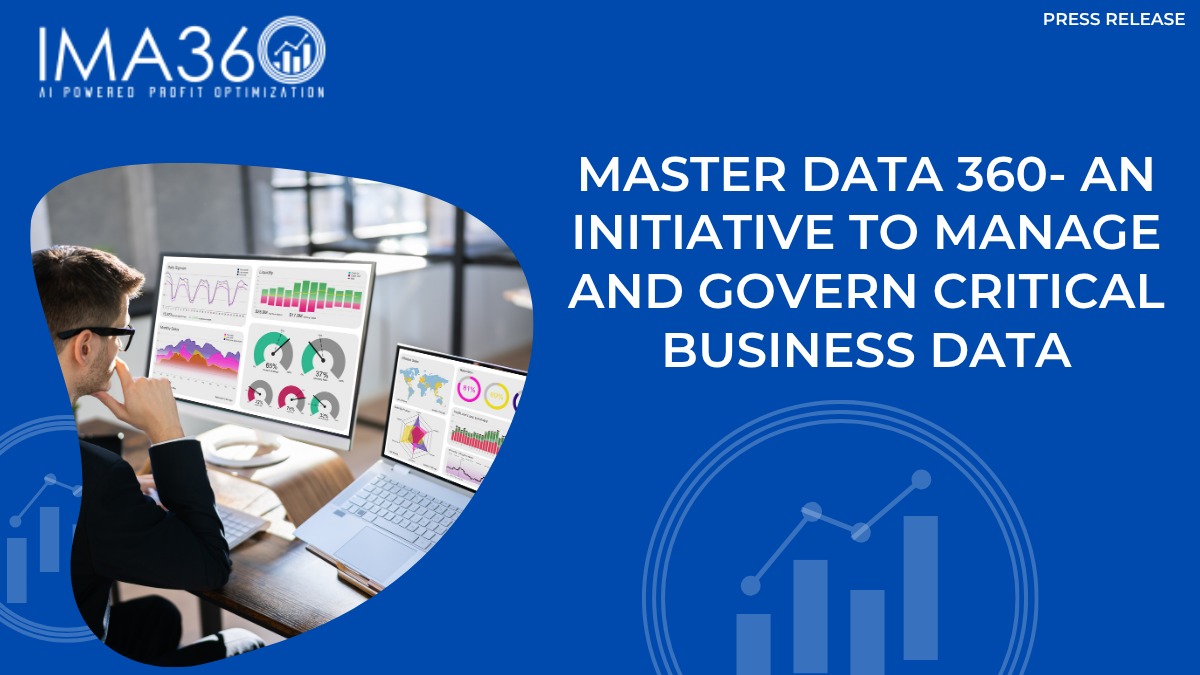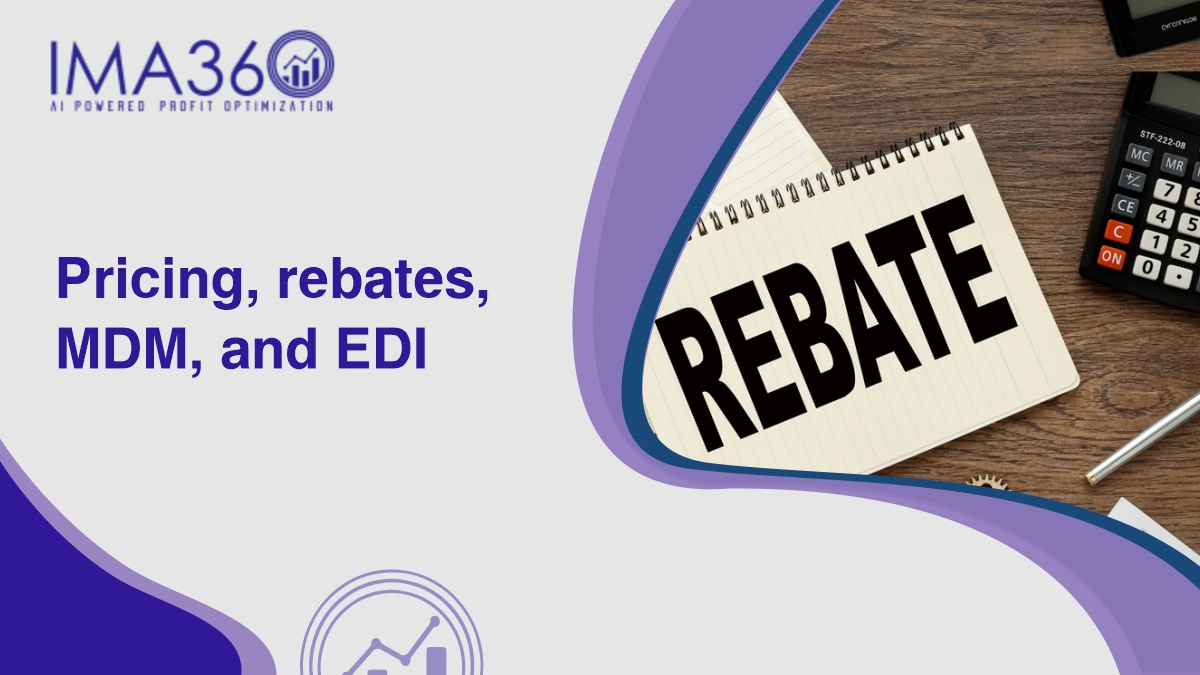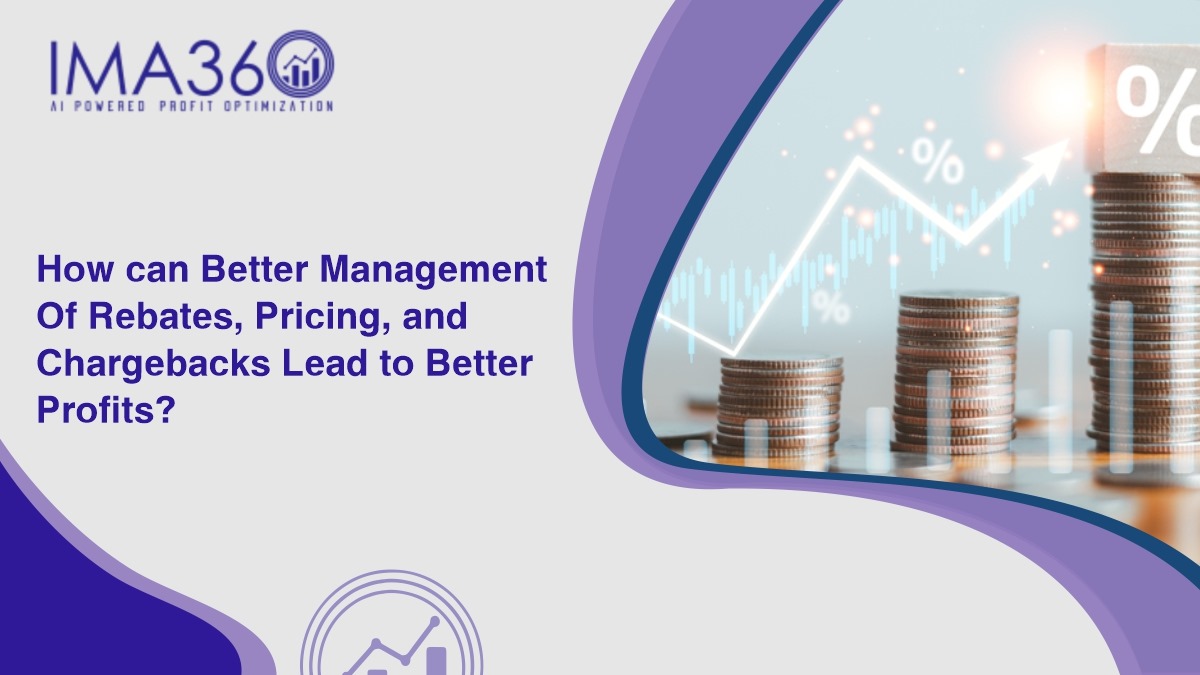In the B2B (business-to-business) world, pricing structures and incentive programs are more complex than in B2C (business-to-consumer) transactions. One of the most significant tools used to drive sales, manage channel relationships, and improve profitability is the rebate.
Rebates can play a vital role in the financial performance and strategic alignment between manufacturers, distributors, and customers.
This blog dives into what rebates are, the types of rebates used in B2B, how they are calculated, the importance of managing them properly, and how AI is revolutionizing rebate management.
What is a Rebate?
A rebate is a retrospective financial incentive paid by a supplier to a buyer, typically based on the buyer’s purchasing performance over a defined period. Unlike upfront discounts, rebates are conditional and often tied to volume thresholds, loyalty, sales performance, or promotional agreements.
Rebates help suppliers incentivize desirable behaviors such as:
- Buying in bulk
- Meeting sales targets
- Promoting specific product lines
- Maintaining loyalty over time
Types of Rebates in B2B
Rebates can be structured in various ways depending on business objectives. The common types include:
1. Volume-Based Rebates:
A volume-based rebate is offered when the buyer purchases a specific quantity over a period. Tiers may be set up — the more you buy, the higher the rebate percentage.
2. Growth Rebates:
A growth rebate is offered when the buyer increases their purchasing volume compared to a prior baseline (e.g., year-over-year growth).
3. Product-Specific Rebates:
These rebates are tied to purchases of specific SKUs or product categories, often used to push new or strategic products.
4. Customer Retention or Loyalty Rebates:
They are designed to reward long-term partnerships and repeat business.
5. Marketing or Promotional Rebates:
They are given in exchange for promoting or marketing the supplier’s products in a specific region or campaign.
6. Tiered Rebates:
The tiered rebates are structured so that different rebate percentages apply once certain thresholds are met, encouraging higher purchase levels.
7. Time-Based Rebates: They are linked to purchases within a specified timeframe (e.g., seasonal or quarterly incentives).
Which Factors Impact the Calculation of Rebates?
Calculating rebates can be highly complex, especially when multiple variables interact with each other. The Key factors include:
- Purchase volume and thresholds
- Product mix and SKU-specific rules
- Contract terms and conditions
- Customer segmentation or tiers
- Sales period or rebate duration
- Return rates or credit notes
- Compliance with program rules (e.g., timely reporting or marketing obligations)
Because of these variables, rebate programs often span across departments — finance, sales, marketing, and legal — requiring tight coordination.
Why Managing Rebates Properly is Critical?
Poor rebate management can have serious business implications, such as:
- Revenue leakage: Missed rebate claims or incorrect calculations can result in lost income.
- Eroded trust: Discrepancies between supplier and buyer records damage relationships.
- Audit risk: Inconsistent documentation or non-compliance can lead to failed audits.
- Strategic misalignment: Without clear visibility, companies might not meet targets or maximize incentives.
Properly managed rebate programs can lead to better margins, stronger partnerships, and improved business intelligence.
What are the Best Practices for Managing Rebates?
To maximize the benefits of rebates and avoid common pitfalls, businesses should adopt these best practices:
- Centralized rebate management: Use a unified platform to manage agreements, track purchases, and automate calculations.
- Standardize rebate terms: Avoid overly complex or inconsistent structures that increase administrative burden.
- Ensure transparency: Keep all stakeholders informed of progress against rebate targets in real-time.
- Automate validation and claims: Reduce human error by automating processes such as eligibility checks and accrual tracking.
- Integrate with ERP and CRM systems: Seamless data flow helps track actual vs. projected performance and avoid duplication.
- Audit regularly: Periodic reviews ensure compliance and identify opportunities for optimization.
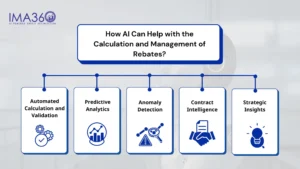
How AI Can Help with the Calculation and Management of Rebates?
Artificial Intelligence (AI) is transforming rebate management by introducing speed, accuracy, and predictive power. Here’s how:
1. Automated Calculation and Validation:
AI can automate rebate calculations by interpreting contracts, tracking purchase data, and applying the correct rules in real time. It helps reduce errors and manual workload.
2. Predictive Analytics:
AI models can forecast whether a customer is on track to meet rebate thresholds, helping sales teams take proactive action to close the gap.
3. Anomaly Detection:
AI can flag unusual patterns in rebate claims, helping detect fraud, compliance issues, or data entry errors.
4. Contract Intelligence:
Natural Language Processing (NLP) allows AI to read and extract terms from complex contracts, converting them into structured data for calculation engines.
5. Strategic Insights:
AI can analyze historical rebate performance and market trends to suggest better rebate structures or promotional strategies.
Conclusion
Rebates are a powerful strategic tool in the B2B landscape, but their complexity requires proper management to unlock their full value. By understanding the various types of rebates, the factors that influence them, and the need for accurate tracking and governance, companies can avoid common pitfalls and drive better results.
As rebate programs grow in scale and complexity, manual methods fall short. Embracing automation and AI for rebate management not only ensures accuracy and efficiency but also gives organizations a competitive edge in strategic planning and partner engagement.
How can IMA360 help?
The rebate optimization and management software from IMA360 automates the analysis of rebates. It helps calculate a huge volume of rebates in a short time. Thus, it adds accuracy to the calculation process and saves precious time for teams. IMA360 helps track all the rebates provided to customers so far. It is a single source of truth for historical records and future reference. It provides intelligence and a structural framework for future scenarios.
We at IMA360 also provide solutions to manage and optimize pricing, chargebacks, contracts, promotions, and royalties. Our suite of AI solutions helps adopt dynamic pricing models, formulate pricing strategies, track competition, analyze industry trends, study current demand for a product, and pre-empt its future demand. It also helps add to margins and profitability, thus making it a complete profit optimization platform.

Deepak Bhardwaj has 10 years of experience advocating AI for profit and revenue optimization, data security, and analytics.
He has partnered with customers in USA, UK, and the APAC region to help them with suitable AI solutions as per their needs.

